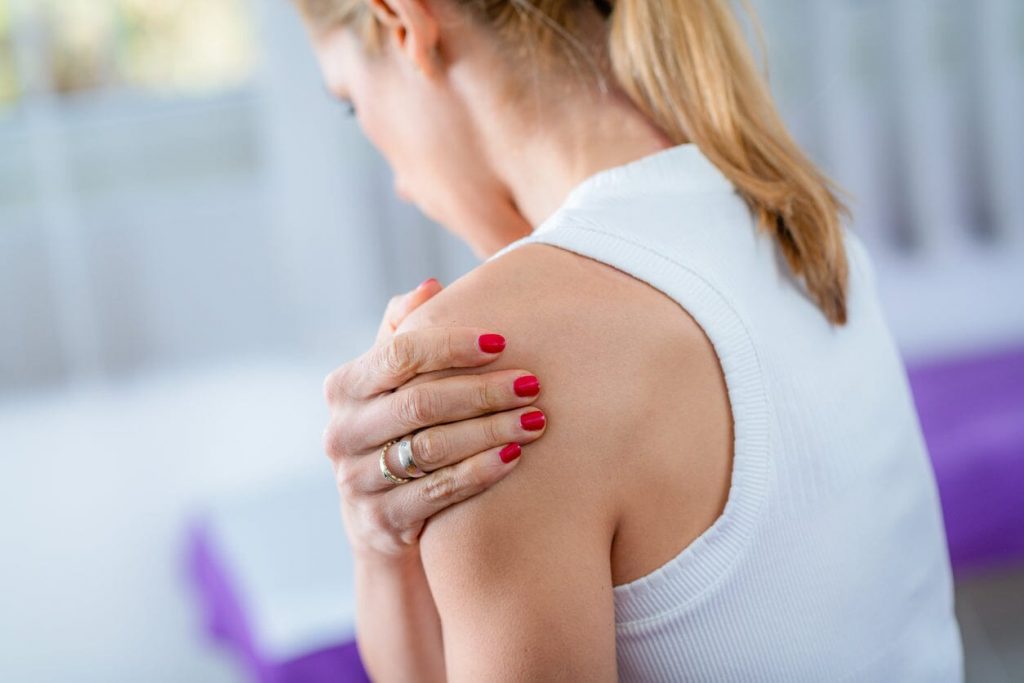Feeling some mysterious pins and needles in your hands, feet, arms or legs? If you’re a woman of menopausal age, those tingling, prickling sensations in your extremities may well be the result of hormonal fluctuations.
When we enter the menopause — for most women, between the age of 45 and 55 — we expect a number of hallmark symptoms: hot flushes, night sweats and vaginal dryness. However, it’s fair to say that pins and needles aren’t a quintessential menopause symptom.
Many women aren’t even aware of the link, which is why the onset of unexplained pins and needles can be quite disturbing to say the least!
However, tingling extremities — also known as paresthesia — can be linked to natural oestrogen fluctuations and blood circulation problems that occur during this time of our lives.
Let’s explore why this is the case, what hormones are involved and what can be done to help minimise these troublesome tickling sensations.
What are tingling extremities (paresthesia)?
Referred to classically as ‘pins and needles’, tingling extremities are feelings of prickling, tickling or numbness in our hands, feet, legs or arms. They are caused by nerve cells sending messages to the brain. Known medically as paresthesia, these feelings are usually harmless and temporary.
We’ll all be familiar with the sensations (or lack thereof) that arise after putting too much pressure on a limb for a period of time — whether it’s a case of a post-slumber arm, being sat awkwardly, or having crossed your legs for too long. This interrupts messages between the brain and the nerves, leading to a loss of feeling and the limb ‘falling asleep’.
When this pressure is relieved, the cells start to reawaken and impulses flow through the nerves again. When this happens, pain and temperature-sensing fibres begin to fire, producing often uncomfortable, strange prickling sensations.
What are the symptoms of tingling extremities (paresthesia)?
Tingling extremities (paresthesia) — or ‘pins and needles’ — is commonly identified by the following symptoms in the arms, legs, hands or feet:
- A crawling, tingling, prickling, itching or numb sensation
- Hotness or a ‘burning’ sensation
- Increased sensitivity of your extremities
These symptoms can vary in severity and length. During the menopause, some women report only mild, very occasional tingling; others may complain of more troublesome, persistent sensations — sometimes even enough to disturb sleep!

Why does menopause cause tingling extremities (paresthesia)?
The perimenopause, which starts around the mid-40s for most women, is characterised by fluctuation and decline in hormone levels. One of these hormones, oestrogen, plays a key role in our central nervous system. When our oestrogen level goes on its menopausal rollercoaster ride, symptoms of paresthesia can arise.
The reason behind why oestrogen fluctuations cause paresthesia in some women is not completely understood, but it’s thought to be related to how our nerves receive messages. Oestrogen has a big modulatory function in the central nervous system; when hormone levels are thrown off balance, it’s understood that impulses can become misinterpreted.
A loss of oestrogen also affects collagen production, which can make our skin thinner and drier, becoming more prone to itchiness and sensitivity. Additionally, fluctuating oestrogen levels during menopause can cause vasomotor instability, manifesting itself classically as hot flushes and night sweats — but also known to lead to cold, numb hands and feet.
What hormonal changes are linked to tingling extremities (paresthesia)?
As with almost all menopause symptoms, the main culprit behind tingling extremities is the female sex hormone, oestrogen. As we enter the menopause, changes in our ovaries result in less of this key hormone being produced. Levels of the hormone in our body go into flux, producing an incredibly wide range of physical, mental and emotional symptoms.
Is paresthesia during the menopause dangerous?
Although a fairly uncommon symptom, tingling extremities caused by hormonal fluctuations are totally harmless on their own. Of course, numbness may present different risks — a weak grip could cause us to fumble or drop objects, or numb feet can affect our balance. Make sure to pay attention to your body during a bout of pins and needles.
So, thankfully, menopause paresthesia is nothing to worry about in itself. This may help to quell any related anxieties and stresses about unexplained tingling, which itself can be a contributing factor to paresthesia!
How long do tingling extremities last during menopause?
Bouts of tingling and prickling in our hands, feet, arms and legs caused by menopausal hormonal fluctuations usually last only for a few minutes before subsiding.
Rest assured that episodes of paresthesia will eventually go away if they’re linked to your hormones. After your final menstrual period, your oestrogen levels stabilise. At this point, you’ve completed the menopause transition and can expect these paresthesia symptoms to lessen (and eventually disappear!).
This won’t come as much comfort to women who are currently experiencing pins and needles during the perimenopause, however. What can be done in the meantime to lessen the impact?
What can be done to treat tingling extremities (paresthesia)?
Initial treatments for pins and needles caused by menopause hormonal fluctuations should focus on simple lifestyle changes to target the symptoms: ensuring a regular exercise regimen, healthy diet, good hydration and adequate sleep. If your symptoms are causing you particular trouble, you may want to explore other treatments with your doctor, like hormone replacement therapy.
How do you stop menopause tingling? A few simple lifestyle changes can make all the difference:
- Be active — this doesn’t have to mean a pavement-pounding, all-out cross-country or a marathon, of course — just 10 minutes of quality stretching is usually sufficient to get your blood flowing to those tingly extremities. Although the root cause is hormonal, exercise improves your blood circulation which can help to ease the symptoms of paresthesia. Indeed, science shows that exercise is magic for menopause symptoms, also helping to combat hot flushes and mood swings.
- Eat, sleep, hydrate, repeat — forgive us for stating the obvious! Eight hours’ sleep, a healthy diet and adequate water intake are all things that help with general health and wellbeing, as well as for managing menopause symptoms. Watching your caffeine and alcohol intake can also give you the very best chance of beating the menopause pins and needles.
- Quit smoking — smoking isn’t good news for our circulation. As well as being fabulous advice at any time of life, cutting out smoking has been proven to help combat other menopause symptoms like hot flushes and improve overall wellbeing.
- Boost your B12 — a vitamin B12 deficiency is common in those with paresthesia. You may benefit from eating more quality fish, meat, poultry, eggs and dairy products, or perhaps incorporating a daily supplement. Boasting vitamin B12, Cleanmarine MenoMin is one such popular all-in-one daily solution for menopausal women. Additionally, magnesium plays a role in our body’s nerve impulses; consider increasing your intake of nuts, seeds, whole grains, legumes and green leafy vegetables if you think a deficiency may be at play.
- Activate some acupuncture — that’s right: pins and needles can help with pins and needles! This traditional form of Chinese medicine is known to help facilitate blood circulation by dilating constricted blood vessels.
In our blog on alternateratives to HRT for treating the menopause, we’ve explored the some of the key, most impactful lifestyle changes for helping to manage symptoms.

Suffering from particularly problematic pins and needles during the menopause?
If lifestyle changes don’t quell your paresthesia problem and your symptoms are affecting your quality of life, be sure to consult your doctor. They may wish to explore menopause treatments with you, which could include hormone replacement therapy (HRT).
By helping to restore the balance of key hormones like oestrogen and progesterone, HRT has been clinically proven to help to alleviate the symptoms caused by their fluctuation during the menopause.
It is also worth noting that pins and needles can point towards a more serious problem, like nerve damage. This may be the case if your pins and needles symptoms are prolonged and accompanied by weakness, itching, vision problems, pain, spasms, lack of consciousness, loss of limb control, loss of bladder control, or walking or speech difficulties.
These types of paresthesia can be caused by traumatic injury, bacterial infection, repetitive stress injury, exposure to toxins as well as diseases like diabetes. If you suspect your tingling extremities have one of these more serious underlying causes, or you’re experiencing any of the additional symptoms mentioned above, consult a doctor immediately.
Inspired Health: for a happy, healthy menopause journey
Whilst you’re here, be sure to check out The Menopause Blog — a dedicated hub of research-packed articles and insights on the menopause, hormones and symptoms. At Inspired Health, we’re the official UK home for a number of leading health and wellness brands, including Cleanmarine and their all-in-one menopause supplement, MenoMin.









